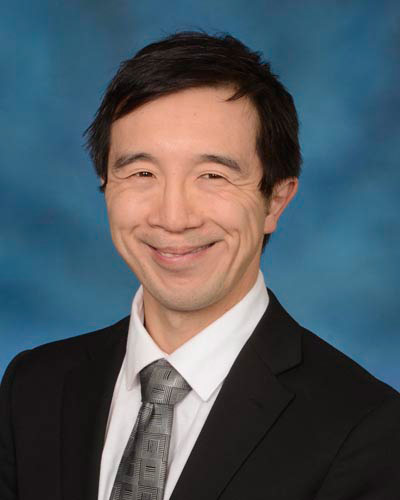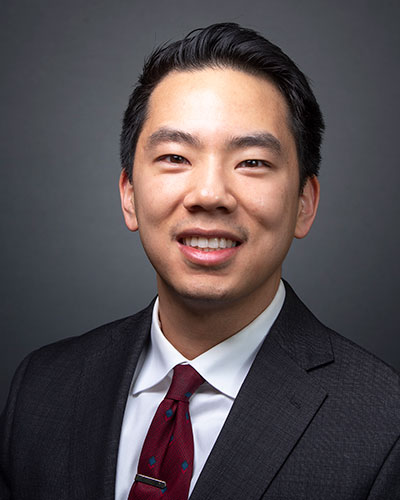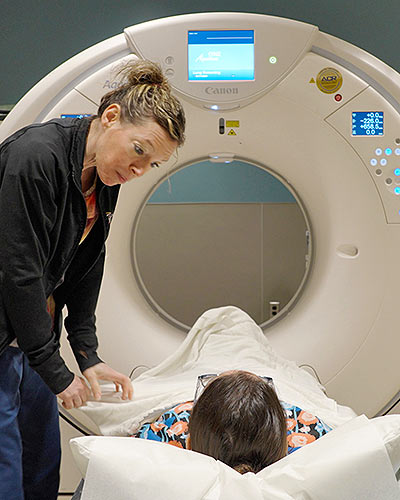October 10, 2019 | Deborah Kotz

Early results from clinical study suggest two immunotherapy drugs could help shrink tumors with minimal toxicity.
A combination of two immunotherapy drugs and radiation prior to surgery could offer a potential new treatment for soft tissue sarcomas, a rare type of cancer, according to University of Maryland School of Medicine (UMSOM) researchers who presented their early results last week at the annual Musculoskeletal Tumor Society (MSTS) meeting in Portland, OR.
Approximately 13,000 Americans are diagnosed with soft tissue sarcoma each year, according to the National Cancer Institute, and more than 5,000 die from the disease. Sarcomas are cancerous tumors that grow from connective tissues such as muscle, fat and cartilage. They are located most often in the trunk, pelvis, and limbs.
At the University of Maryland Greenebaum Comprehensive Cancer Center (UMGCCC), as part of a clinical trial, eight eligible patients with a soft tissue sarcoma that is high-risk for spreading to other parts of the body completed three rounds of the FDA-approved immunotherapy drugs Durvalumab (1500 milligram dose) and Tremelimumab (75 milligram dose) along with two rounds of radiation over nine weeks prior to have surgery to remove their tumor. Additional patients have been enrolled, but have not yet completed treatment.
These two drugs work by blocking certain signals that the tumor uses to hinder the patient’s own immune system, thereby stimulating the immune system to attack the cancer. The goal is to lower the risk of the sarcoma metastasizing and spreading to other parts of the body, which occurs in about half of patients with high-risk soft tissue sarcoma. Durvalumab has been approved by the FDA for use in other cancer types, and the combination of Tremelimumab and Durvalumab is being studied in multiple clinical trials.
The ongoing clinical trial called NEXIS (Neoadjuvant Radiation and Immunotherapy for Soft Tissue Sarcoma) was initiated by researchers at UMGCCC and evaluates this treatment protocol for sarcoma in two ways. The first phase evaluates the safety of the immunotherapy with radiation and the second phase assesses the effectiveness of the treatment regimen.
Early results presented at the MSTS meeting this week have shown that the NEXIS protocol is well-tolerated by patients who experienced only mild or moderate side effects including fatigue, elevated blood pressure, and muscle pain. Traditional chemotherapy used for soft tissue sarcoma has relatively severe side effects like immune system impairment, nausea, vomiting, weight loss, and heart toxicity. The UMSOM researchers found that after immunotherapy and radiation, the primary tumor showed resolution of tumor activity on PET (positron emission tomography) scans in 38 percent of patients and showed significantly reduced activity in 25 percent of patients. Based on microscopic analysis of the tumor after treatment and removal, 88 percent of patients had a good response to immunotherapy and radiation. With an average follow-up of 10 months, 63 percent of patients have no evidence of disease and 25 percent are alive with disease. There have been no recurrences of the sarcoma at the original site.
These findings are consistent with historical efficacy rates using radiation and traditional chemotherapy, but the NEXIS protocol appears to be better tolerated and does not necessitate a delay in surgery from the time of diagnosis.
“We are among the first to use preoperative modern immunotherapy and radiation in soft tissue sarcoma, and we are excited with the early results of the NEXIS protocol,” said the study Principal Investigator Vincent Y. Ng, MD, Assistant Professor of Orthopaedics at UMSOM and an orthopaedic oncologist with the Bone and Soft Tissue Sarcoma Service at UMGCCC. “By amplifying the immune response to the patient’s specific sarcoma, we may be able to help the immune system address potential sites of sarcoma elsewhere in the body. This is what researchers are seeing in other types of cancer, and we hope to pioneer the NEXIS protocol with sarcoma.”
The study was funded by the Maryland Cigarette Restitution Fund, and the drugs were provided by AstraZeneca.
“This is important work that needs to be replicated in a larger number of patients in order to get a fuller understanding of efficacy,” said UMSOM Dean E. Albert Reece, MD, PhD, MBA, Vice President for Medical Affairs at the University of Maryland and the John Z. and Akiko K. Bowers Distinguished Professor. “Such research fits with the important mission of UMSOM and the University of Maryland Marlene and Stewart Greenebaum Comprehensive Cancer Center, which is to continue to improve treatments for patients with devastating diseases.”
About the University of Maryland School of Medicine
Now in its third century, the University of Maryland School of Medicine was chartered in 1807 as the first public medical school in the United States. It continues today as one of the fastest growing, top-tier biomedical research enterprises in the world, with 43 academic departments, centers, institutes, and programs. The School of Medicine has a faculty of more than 3,000 physicians, scientists, and allied health professionals, including members of the National Academy of Medicine and the National Academy of Sciences, and a distinguished recipient of the Albert E. Lasker Award in Medical Research. With an operating budget of more than $1.2 billion, the School of Medicine works closely in partnership with the University of Maryland Medical Center and Medical System to provide research-intensive, academic and clinically based care for more than 1.2 million patients each year. The School has over 2,500 students, residents, and fellows, and more than $540 million in extramural funding, with most of its academic departments highly ranked among all medical schools in the nation in research funding. As one of the seven professional schools that make up the University of Maryland, Baltimore campus, the School of Medicine has a total workforce of nearly 7,000 individuals. The combined School and Medical System (“University of Maryland Medicine”) has an annual budget of over $6 billion and an economic impact of more than $15 billion on the state and local community. The School of Medicine faculty, which ranks as the 8th highest among public medical schools in research productivity, is an innovator in translational medicine, with 600 active patents and 24 start-up companies. The School works locally, nationally, and globally, with research and treatment facilities in 36 countries around the world. Visit medschool.umaryland.edu
About the University of Maryland Marlene and Stewart Greenebaum Comprehensive Cancer Center
The University of Maryland Marlene and Stewart Greenebaum Comprehensive Cancer Center (UMGCCC) is a National Cancer Institute-designated Comprehensive Cancer Center in Baltimore. The center is a joint entity of the University of Maryland Medical Center and University of Maryland School of Medicine. It offers a multidisciplinary approach to treating all types of cancer and has an active cancer research program. It is ranked among the top 20 cancer programs in the nation by U.S. News & World Report. www.umgccc.org.
Contact
Department of Anesthesiology
(410) 328-6120 (phone)
(410) 328-5531 (fax)
newsletter@som.umaryland.edu
Deborah Kotz
Director of Media Relations
Office of Public Affairs & Communications
University of Maryland School of Medicine
o: 410-706-4255
c: 410-804-0054
t: @debkotz2
Related stories

Tuesday, October 01, 2024
Cancer Patients Who Experience Cognitive Decline After Radiation Treatment for Brain Metastases May Regain Full Neurocognitive Function, New Study Suggests
Nearly 40 percent of cancer patients who experienced memory loss, brain fog and other cognitive difficulties after radiation treatment for brain metastases regained full neurocognitive function within six months, according to a new analysis by radiation oncology researchers at the University of Maryland Greenebaum Comprehensive Cancer Center (UMGCCC).

Tuesday, April 16, 2024
University of Maryland Greenebaum Comprehensive Cancer Center and AstraZeneca Partner to Enhance Community-Based Lung Cancer Screening and Detection for Marylanders at High Risk
With only a small percentage of Marylanders at high risk for lung cancer getting the recommended annual screening, the University of Maryland Marlene and Stewart Greenebaum Comprehensive Cancer Center (UMGCCC) today launched a new statewide effort to increase annual screenings.

Wednesday, September 20, 2017
New Clinical Trial Explores Combining Immunotherapy and Radiation for Newly Diagnosed Sarcoma Patients
University of Maryland School of Medicine researchers are investigating a new approach to treat high-risk soft-tissue sarcomas by combining two immunotherapy drugs with radiation therapy to stimulate the immune system to destroy the main tumor as well as leftover microscopic cancer cells that may seed other tumors.
